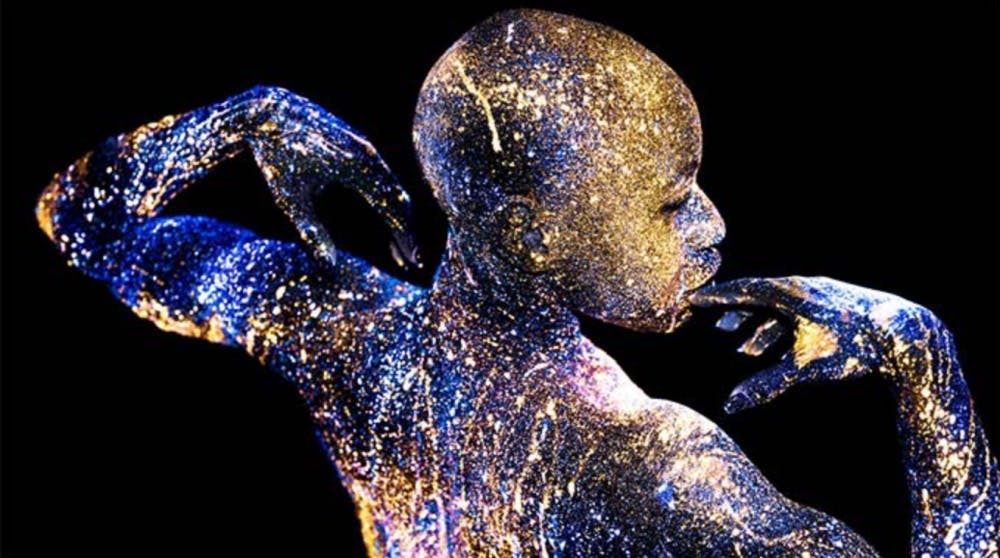After seeing “An Incomplete History of Protest,” an exhibition at the Whitney Museum of American Art, Middlebury’s Chief Curator & Director of Engagement Jason Vrooman began thinking about curating an exhibition surrounding Protest Art in the Middlebury Museum of Art.
Unfortunately, 2020 became a year of lost time, with the Covid-19 pandemic temporarily closing the college museum and sending most of the college’s students and faculty away from campus. But the museum’s staff decided to take advantage of this period to rethink certain aspects of the museum, including reorganizing the permanent galleries with the goals of greater accessibility and inclusivity in mind.
Staff redoubled their efforts to hollow out a permanent installation in the museum for “Art and Activism” in light of the Black Lives Matter and racial justice protests of summer 2020.
“There were so many more amazing stories of artistic protest that we could have told, and so many great works that remained in storage, that I knew I wanted to curate a larger show,” Vrooman said in an email to The Campus.
With the museum reopening as well as Middlebury College returning to majority in-person learning this fall, Vrooman and the staff felt that an exhibition of activist art was pertinent.
“Middlebury’s art museum is a place where anyone can come to learn about the past, contemplate our current moment, and think about how we [move] forward together as a society,” Vrooman said.
Planning began in spring 2021 and continued into the summer, with many meetings surrounding the complications that can arise when working on such a multi-faceted project.
Another contributor to the project was Co-Curator María Ramirez ’21, who brought her personal experiences surrounding how people of color are viewed in museums and how she wanted to make the museum accessible.
She began by asking the question, “who will this reach and how will it affect them?” Thanks to some of the museum’s grant money, Ramirez and Vrooman worked together, purposefully looking to acquire new works by women or artists of color.
The museum also enlisted the help of their summer interns to take part in discussions surrounding the works and engage in conversations with multiple artists in the gallery about their pieces and what it means to decolonize a museum. Florence Wu ’22 focused on the photojournalism aspect of the exhibit, researching different information surrounding the photographs in the museum as well as writing some of the labels.
“I see photojournalism as having a lot of hit or miss potential. It’s not very long lasting. You look at some photojournalists and it’s just one photograph that defined their career,” Wu said.
The power of art in creating a movement is what helped spark Visiting Assistant Professor of Art History and Architecture Sarah Rogers’ love for the exhibit.
“Art has a way of drawing us in so that we can become more contemplative of socio-political issues,” Rogers said.
In the spring of 2021, she began forming a plan to offer an Art and Protest class for the upcoming fall semester. When Vrooman caught wind of this, the two decided to work together.
Vrooman talked to faculty to see what images would most benefit students’ learning, while Rogers started relating sections of her syllabus to works in the exhibit. Rather than taking a chronological approach, she decided to organize the syllabus around different strategies one may use in protest art: caricature, art in museums versus street art, bodily insertions and more. This allowed for students to better see the impact and limits that protest art has on an audience, while also enabling them to become better participants in the world regarding socio-cultural problems.
According to Rogers, this iteration of the course will likely only be offered this semester. In its place, Rogers is planning to offer a related class either on the refugee crisis and the push to decolonize museums or one focused on a specific issue in protest art next semester.
The “Art and Protest” exhibit is only on display until mid-December. Usually only six to eight temporary exhibitions are displayed in the museum, along with the permanent collection works.
“Art & Protest: Artists as Agents of Social Change” is open from Sept. 14 to Dec. 12, 2021, and reservations are required. To reserve a spot, visit: go.middlebury.edu/museumvisit/.
HARC 243 is part of the Public Humanities Lab Initiative, supported by the Axinn Center for Humanities.
Editor’s Note: Florence Wu is a Local Editor for The Campus.

Orly Berke '25 (she/her) is a News Editor.
This is Orly’s second year as news editor with previous experience as a staff writer.
She is a joint political science - art history major. Outside of academics she is a member of the College Democrats as well as Darkroom club. She enjoys watching movies, cooking, and spending time with friends, oftentimes in Proctor, her favorite dining hall.




